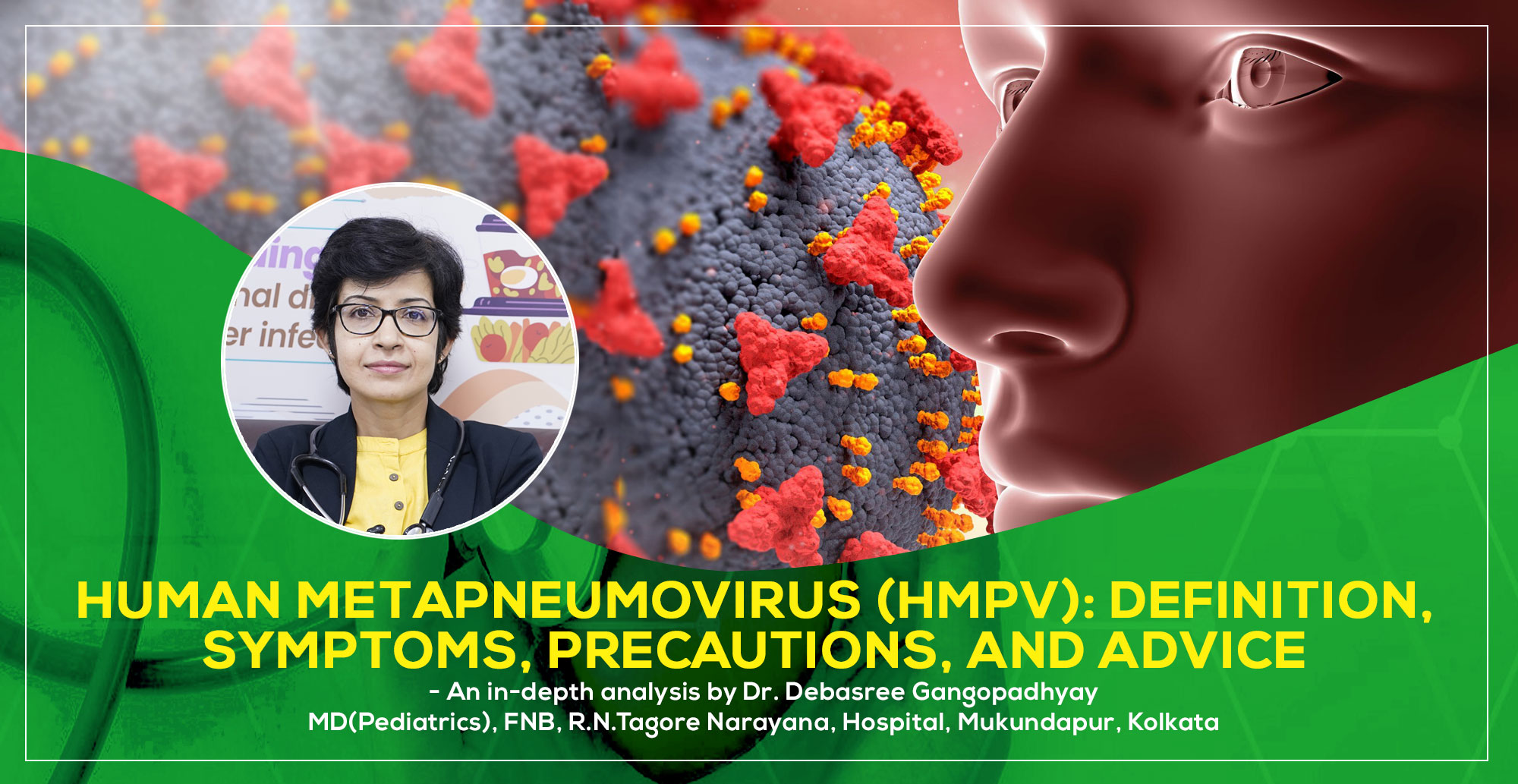Subtotal $0.00
Introduction
Human Metapneumovirus (HMPV) is an important respiratory virus that can cause upper and lower respiratory disease in people of all ages, especially among young children, older adults, and people with weakened immune systems. It shares similarities with the flu, RSV, and COVID-19 but differs in its genetic makeup and some symptoms.HMPV, which affects people of all ages, can frequently resemble other respiratory conditions but can cause severe issues in susceptible individuals. Despite its prevalence, many people remain unaware of its symptoms, transmission, and prevention strategies. In this article, we’ll explore everything you need to know about HMPV, from symptoms to preventive measures. By staying informed, you can protect yourself and your loved ones from this sneaky viral intruder.
What is Human Metapneumovirus (HMPV)?
Human Metapneumovirus (HMPV) is a respiratory virus that primarily affects the upper and lower respiratory tracts. Discovered in 2001, it belongs to the Pneumoviridae family and is closely related to the Respiratory Syncytial Virus (RSV). While it primarily causes mild symptoms in healthy individuals, it can lead to severe respiratory infections in children, older adults, and people with weak immune systems.
Symptoms of Human Metapneumovirus (HMPV)
Common Symptoms in Kids
-
- Runny nose
- Cough
- Fever
- Sore throat
- Fatigue
Severe Symptoms in Vulnerable Groups
- Difficulty breathing
- Wheezing
- Rapid or labored breathing
- Reduced oxygen levels
In severe cases, HMPV can progress to bronchitis or pneumonia, particularly in young children and the elderly.
Advice for Parents
If your child experiences difficulty breathing, high fever, or shows signs of dehydration, seeks medical attention immediately. Keeping children hydrated and encouraging rest are essential during recovery.
HMPV in Adults
For adults, certain groups, such as the elderly and those with underlying health issues, are at risk of severe complications.
Symptoms in Adults
- Mild fever
- Shortness of breath
- Persistent cough
- Fatigue
Chronic conditions like asthma, COPD, or heart disease can worsen the severity of HMPV in adults.
How HMPV Spreads
HMPV spreads much like other respiratory viruses,primarily through respiratory droplets when an infected person coughs or sneezes. It can also spread via direct contact with contaminated surfacesand then touching your mouth, nose, or eyes—a common route of transmission. Crowded placesare hotspots for outbreaks.
Risk Factors:
Who is at Risk?
High-Risk Groups
- Children under five
- Elderly individuals
- People with chronic lung diseases or weak-immune systems
Age-Specific Vulnerabilities
Infants and toddlers are more likely to experience severe symptoms, while older adults may face complications due to pre-existing health conditions.
Diagnosis of HMPV
Diagnosing HMPV
Diagnosing HMPV can be challenging as its symptoms overlap with other respiratory illnesses like the flu, RSV, and COVID-19. Doctors often use laboratory tests, such as polymerase chain reaction (PCR) testing, to confirm the presence of HMPV in respiratory samples.
Common Diagnostic Methods
- Clinical evaluation based on symptoms
- Chest X-rays to identify complications like pneumonia
Laboratory Tests for Confirmation
- Polymerase Chain Reaction (PCR) tests
Complications Associated with HMPV
In some cases, HMPV can lead to:
- Severe bronchitis
- Pneumonia
- Exacerbation of asthma or chronic obstructive pulmonary disease (COPD)
Treatment Options for HMPV
Currently, there is no specific antiviral treatment for HMPV. Supportive care focuses on:
- Managing fever and pain with medications
- Ensuring adequate hydration
- Using oxygen therapy in severe cases
Preventive Measures
Hygiene Practices
- Wash hands frequently with soap and water
- Use alcohol-based hand sanitizers
- Avoid touching the face
Protective Measures
- Wear masks in crowded or high-risk areas.
- Stay home when sick
- Avoid close contact with infected individuals
Vaccines and Research
While there is no approved vaccine for HMPV, researchers are actively working on developing one, for offering hope for better prevention and management in the future.
Role of Healthcare Professionals
Healthcare professionals play a crucial role in managing Human Metapneumovirus (HMPV) by ensuring timely diagnosis, treatment, and prevention.
Role of a PediatricCardiologist in HMPV Treatment
While Human Metapneumovirus (HMPV) primarily affects the respiratory system, it can sometimesworsen pre-existing heart conditions, particularly in children who have acquired or congenital heart defects.
Kolkata is becoming an important hub for specialist cardiac therapy for children due to significant innovations in pediatric cardiac care. A pediatric cardiologistin Kolkata plays a critical role in managing these cases:
-
- Monitoring Cardiac Health: HMPV infections can put more strain on the heart due to low oxygen levels caused by respiratory distress. Pediatric cardiologists ensure the child’s heart is functioning optimally during the illness.
- Managing Complications:In children with pre-existing heart conditions, HMPV may lead to complications such as pulmonary hypertension or heart failure. The cardiologist provides the best possible treatment to stabilize cardiac function.
- Collaborative Care:They work closely with paediatricians, neonatologists, pediatric surgeons and pulmonologists to provide a holistic approach to treatment, addressing both respiratory and cardiac concerns.
- Preventive Measures:For high-risk children with heart defects, the cardiologist may recommend additional preventive measures like vaccinations against other respiratory illnesses to reduce overall risk.
- Long-Term Follow-Up:After recovery, they monitor the child for any lingering effects on the heart, such as strain or reduced cardiac function etc., ensuring full recovery and reducing future risks.
Pediatric cardiologists ensure that children with heart conditions receive specialized care, minimizing complications and improving outcomes during and after HMPV infections.
Advice for Caregivers
- Monitor the patient for signs of worsening symptoms
- Ensure proper hydration and nutrition
- Seek medical help if symptoms worsen.
When to Seek Medical Help
It’s critical to consult a doctor if you or your child experience:
- Persistent high fever
- Difficulty breathing
- Blue-tinted skin or lips (cyanosis)
- Signs of dehydration
Conclusion
Human Metapneumovirus is a significant respiratory virus that demands attention, especially for vulnerable populations. Awareness, hygiene, and timely medical intervention are the keys to preventing severe outcomes.
FAQs on Human Metapneumovirus (HMPV)
- What is HMPV, and how is it different from other respiratory viruses?
HMPV is a respiratory virus similar to RSV but has unique genetic characteristics and clinical presentations. - Are there any vaccines to prevent HMPV?
Currently, there is no vaccine for HMPV.
-
- How long does HMPV infection last?
Most infections last 7-10 days, with severe cases taking longer to recover. - Is HMPV life-threatening?
HMPV can be life-threatening in young children, the elderly and immune-compromised individuals. - What should I do if my child has HMPV symptoms?
Ensure they rest, stay hydrated, and consult a healthcare provider as soon as possible.
- How long does HMPV infection last?
Read Also: How to Protect Your Child’s Heart in Winter Season

Dr. Debasree Gangopadhyay is a highly respected pediatric cardiologist based in Kolkata, India, specializing in the diagnosis and treatment of heart conditions in children. With a compassionate approach and a commitment to excellence, Dr. Gangopadhyay has made significant contributions to the field of pediatric cardiology. Her expertise includes managing congenital heart defects, arrhythmias, and other cardiovascular conditions in young patients. Dr. Gangopadhyay is dedicated to providing personalized care and staying updated with the latest advancements in pediatric cardiology. She is passionate about educating families on heart health and actively participates in research and community outreach programs.




Comments are closed